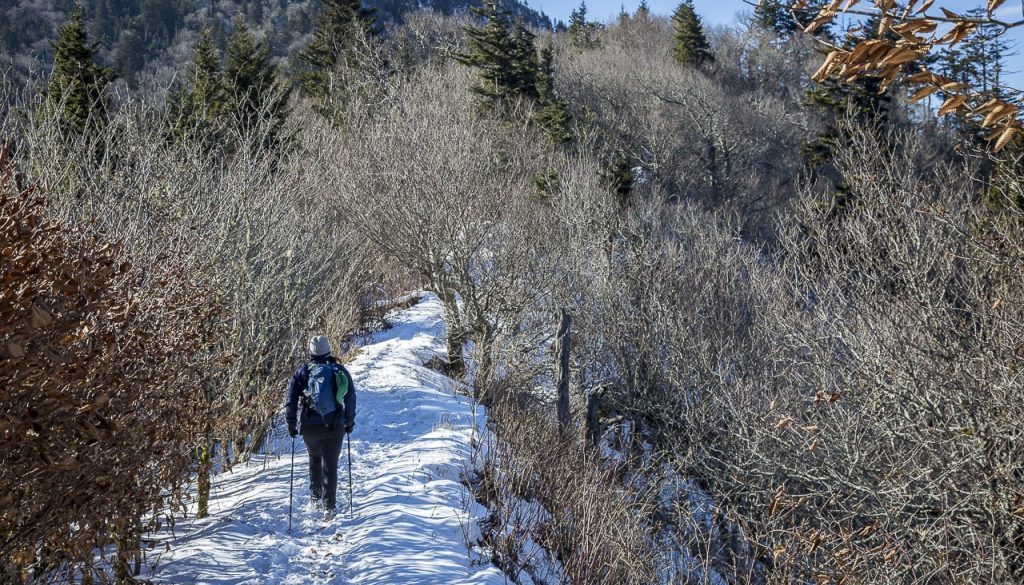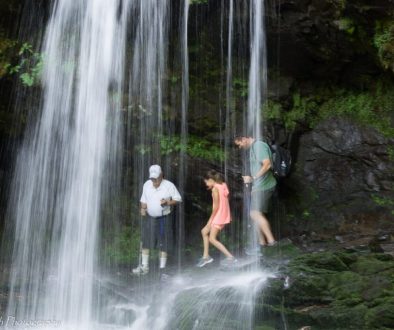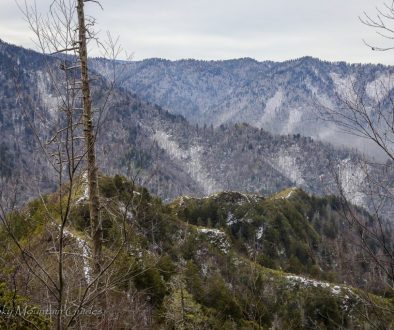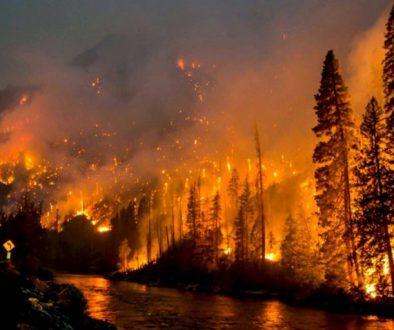The Great Smoky Mountains National Park is full of places to hike. With over 150 official trials covering 800+ miles, it\’s easy to get out and find new adventures every time you visit. Many people enjoy the summer and fall months, exploring the mountains lush foliage and mountain top views. But what happens once the leaves fall and temperatures drop?
LESS PEOPLE. NEW CHALLENGES. INCREDIBLE VIEWS.
Where To Hike
With so many trails, it\’s hard to say what the best places are to hike during the winter. Some people prefer the quiet backcountry of the low elevations that remains in more moderate temperatures throughout the year. Others prefer the frigid high elevations of the Appalachian Trail and the stillness of a snow covered landscape. Where you go is up to you! Check trail elevations and length before heading out on your next adventure and plan appropriately!
High Elevation
When hiking in higher elevations of the Smokies you will run into a few more challenges, especially during the winter. The higher you go the harder it is to breathe due to thinner air. Also, the air is drier and therefore, you will dry out more quickly. Take this into account as you plan your mileage and time for your trip and pack extra water! Temperatures also drop quickly as you head up the mountains. If you start at a lower elevation, be prepared for rapid temperature drops as you climb. Temperatures generally drop two degrees for every 500 feet you climb. Always dress in layers and adjust accordingly as you go.
Snow + Ice
Snow and ice add a beautiful yet dangerous side to the winter side of hiking in the Smokies. Small springs that you see throughout the summer turn into beautiful walls of ice. While they can be stunning, they have the potential to break and fall off. Always be careful around these and areas where icicles are hanging off of bluffs to stay safe. With snowy and icy trails come great beauty and pristine views but also some slippery slopes…literally. Be aware of steep hikes as well as trails that have drop-offs on the sides. It is best to avoid these trails unless you have proper footwear or crampons. Check out this article on proper gear selection for winter camping and hiking. Snow and ice are what make winter, winter! Enjoy it! Just don\’t \”slip up\” and forget to be careful!
The Quiet
If you know the Smokies, you probably know it\’s the most visited National Park in the country (here\’s why). Being the most visited, you have all sorts of problems such as noise, litter, traffic and very little parking. Not during the winter! Clear roads (not necessarily the snow) and hundreds of open parking areas equal great access and quiet adventures through the snowy mountains. Also, the snow has great sound absorbing properties which create a serene and unique environment to escape the hustle and bustle of everyday life. Get out and experience it yourself!
Wildlife
Snow creates a clean white canvas for tiny paw prints (and big ones) to show up on and around the trails. Bring along a camera and take pictures of animal tracks to identify once you get home. Also, you might find yourself seeing more wildlife this time of year due to the thinning foliage/underbrush and the calmer atmosphere. Fun fact: Black bear don\’t go into a full hibernation in the park. This means they will still be active on your adventures! Keep your eyes open!
Ultimately, be safe. If you take proper safety measures and the right gear, you will have an amazing time. Want a guide to help along the way? We can do that too.
Hike often. Stay safe. Live adventurously.



